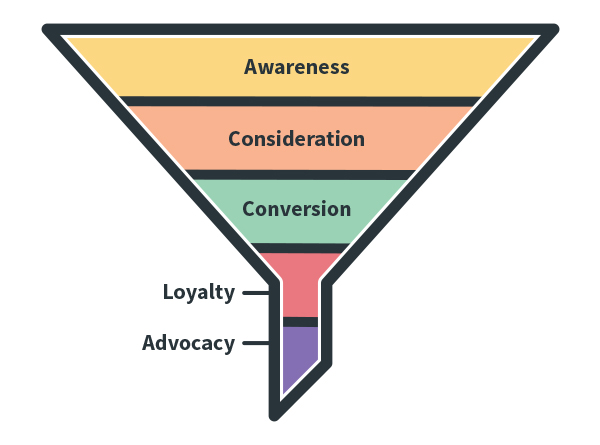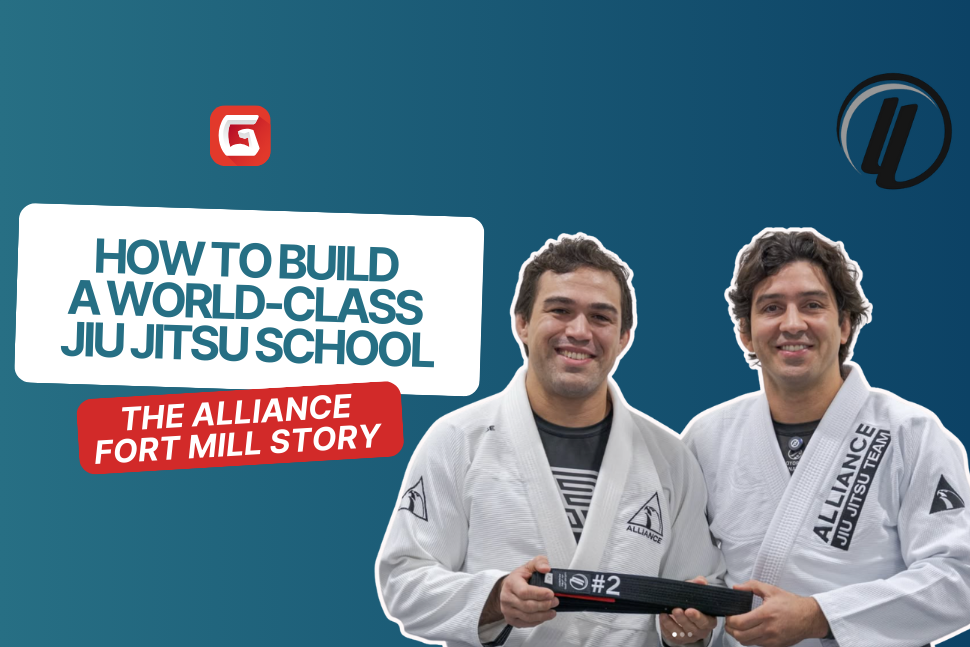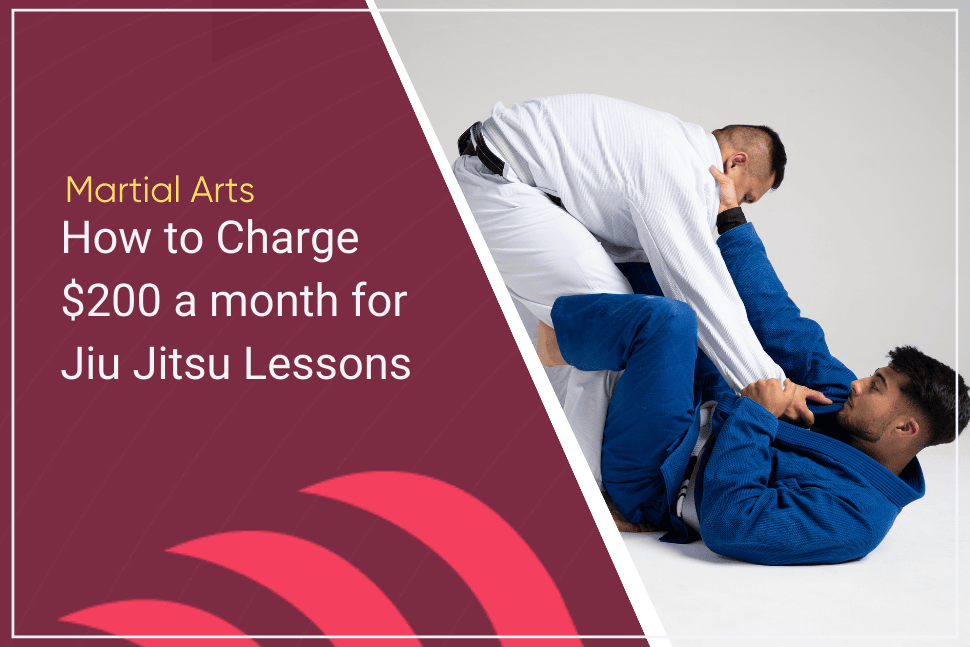How to Create A Marketing Campaign that Brings New People to Your Martial Arts School

Most martial arts schools struggle with attracting new students. Being an experienced practitioner in your art does not necessarily translate into running marketing effectively for your school.
As a martial art marketing agency, we often talk to school owners that are unsure on how to set up consistent and effective marketing campaigns for generating new leads for membership. There are many marketing channels and information available, so it can be hard to figure out where to start and how to go about it.
The process through which we convert interest in our school to a paying member is often called a funnel, and flows like the funnel illustration seen above.
Only a part of the overall pool of people will progress through each step in the funnel. Our goal in building a successful marketing campaign is to get as many relevant people as we can to the top of the funnel, and then attempt to get as many people as we can to the end of it.
How Do We Create A Sales Funnel?
Let's take a deeper look into an example of how we can create a sales funnel using online ads.
First of all, you should invest time in creating ads that catch your students' attention. Effective ads have great images or videos and a clear, scannable, and attractive ad copy. The ad should aim to grab your customer's name, email, and phone number or take them to a landing page, where they can see what your school offers and sign up for it.
Once you have a potential customer’s contact information, you should get in touch with them as soon as possible before they start to lose interest or get attracted by an offer from a different school or activity. After they click on your ad and you get their information, contact the new lead right away. A study from Harvard Business Review showed that contacting leads within 5 minutes increases conversion by up to 400%.
You should create automated notifications that will let you know when a new lead comes in and you should give them a call right away! A call is one of the best ways to build rapport and see if martial arts is the right fit for them. Ask the student what spiked their interest in the ad, what they are looking for with a martial arts program, and how you can help them. Listen attentively to their stories, show the value of your business, ask about their concerns, clarify their questions, and convert them into booking an appointment.
If you do not get a response, make sure your campaign is set up in a way that you will follow up until the lead books an appointment or says no. We need to be more persistent in the beginning because the lead is fresh and just showed interest in the offer. Losing this opportunity means that you are wasting the money you spent on ads.
Vary the time and frequency of the outreach by creating a sequence of the different channels you will use every day. You may like to follow your calls with voicemail drops, text messages, and emails.
The voice messages should be short, friendly, and ask them to give you a callback.
Text messages and emails get better results when they are personalized with people's names on them. The first ones you send should thank the customers for their interest and say that you are going to be contacting them over the phone. If there is no response, the other messages should remind them about their interest in your offer, the value of your martial arts programs, and should end with a call to action.
The goal is to book an appointment and get them to show up. Always try to engage with your potential members by having a call to action or asking questions relevant to them. For example, “Have you tried any martial arts class before?”, “What are your goals?”, “Why are you interested in learning martial arts?”
Explaining through Example
Here is an example of a sequence you can try:
Immediately: Within 5 minutes - Call / Voicemail + text + Email
Day 1: 9 am - Call + text message
Day 2: 2 PM- Call + text message
Day 3: 7 PM - Call + voicemail + text message
Day 4: 11 AM - Text Message
Day 5: 12 PM - Text Message
Day 6: 1 PM - Call + Voicemail
Day 7: 8:00 AM - Text message + Email
This is an initial outline that you will need to revisit and revise as you get feedback from your leads. You’ll want to run a campaign over at least a few weeks, and continue to revise it on a regular basis. Optimize your campaigns by reviewing your data and response rates at each stage. Make adjustments to the timing, channel, and content in your messages. The optimization process takes time and the more student leads that have gone through your campaign, the more you’ll learn what works.
Besides creating a new leads campaign, you should also create a 6-month nurture campaign in order to follow up with the lead on a regular basis to see if the timing works better. Set up automated text messages or emails that will be sent after 14 days, 21 days, 2 months, 3 months, etc. Even if they were not ready to start right away, a later time might be a better opportunity to try again.
Give it a shot, and let us know if you need help!
Those are some basic marketing strategies we employ for martial arts schools that use our services. I know of many school owners who have created amazing marketing campaigns on their own, however if you do not feel confident doing that and would like expert help custom tailored to your specific needs, feel free to reach out and I’m sure we can help you out.
Gym management software that frees up your time and helps you grow.
Simplified billing, enrollment, student management, and marketing features that help you grow your gym or martial arts school.





